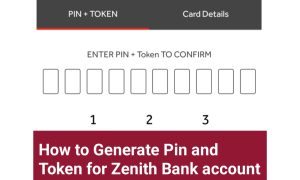The world of finance can often seem confusing, filled with numbers, graphs, and tricky words that only a few understand. However, there’s one thing about money that affects us all: the cost to change one type of money, like dollars, into another, like naira.
The exchange rate between two currencies impacts everything from the price of your morning coffee to the stability of nations. This story unfolds where money, politics, and random events meet, in a world where people’s financial lives can change rapidly.
This report takes you into that exciting world, focusing on how the dollars to naira exchange rate has moved.
Between 2015 and 2023, the US Dollar to Nigerian Naira exchange rate witnessed a fascinating roller-coaster ride. This eight-year journey reveals dramatic twists and turns, as the fortunes of the Nigerian Naira waxed and waned against the might of the US Dollar.
It’s a journey marked by oil booms and busts, policy changes, and global events like the COVID-19 pandemic. Each year of this period tells its own unique story, illuminating a different facet of the complex global financial machine.
Curious to uncover the intriguing details behind these fluctuating figures? Below is the dollar to naira rate from 2015 to 2023:
| Year | Average exchange rate (NGN) | Highest exchange rate (NGN) | Lowest exchange rate (NGN) |
|---|---|---|---|
| 2015 | 197.8763 | 205.067 | 180.199 |
| 2016 | 201.8838 | 214.964 | 187.670 |
| 2017 | 305.5577 | 327.083 | 282.996 |
| 2018 | 362.5532 | 389.732 | 334.337 |
| 2019 | 362.5532 | 389.732 | 334.337 |
| 2020 | 362.5532 | 389.732 | 334.337 |
| 2021 | 410.3045 | 439.816 | 380.768 |
| 2022 | 457.9789 | 489.816 | 436.116 |
| 2023 | 460.418 | 489.816 | 436.116 |
2015: The average exchange rate in 2015 was 197.8763 NGN, with the highest at 205.067 NGN and the lowest at 180.199 NGN. The relative stability of the rate this year might have been due to consistent macroeconomic policies and a relatively stable oil market, a key source of foreign exchange for Nigeria.
2016: The rates began a noticeable upward trend in 2016, with the average rate rising to 201.8838 NGN. This could be attributed to the global oil price crash around this period which caused a decrease in Nigeria’s foreign earnings, increasing pressure on the Naira.
2017: A significant spike occurred in 2017, the average rate soared to 305.5577 NGN. The reason behind this drastic leap was the Central Bank of Nigeria’s decision to abandon the currency peg that had kept the Naira at about 198 to the dollar. This was done to alleviate the chronic foreign currency shortages caused by the drop in oil revenues.
2018 to 2020: For these three years, the average, highest, and lowest rates remained static at 362.5532 NGN, 389.732 NGN, and 334.337 NGN respectively. This lack of movement was likely a result of the Central Bank of Nigeria’s efforts to stabilize the Naira amidst various economic challenges.
2021: The year 2021 saw another significant jump in the dollar to Naira rate, with an average of 410.3045 NGN. This might have been triggered by the impact of the COVID-19 pandemic, which dealt a severe blow to the global and Nigerian economy.
2022: There was a continued upward trend in 2022, with the average exchange rate reaching 457.9789 NGN. This continued rise might be due to the ongoing economic challenges faced by Nigeria, including a struggling oil sector and inflationary pressures.
2023: As of 2023, the average exchange rate is 460.418 NGN. Although there is a slight increase from the previous year, it is not as drastic as the changes seen in the past. This might suggest a slowing down of the rate of depreciation of the Naira, although the situation remains fluid.
Overall, there has been a clear trend of depreciation of the Naira against the Dollar from 2015 to 2023. This trend can be attributed to a combination of factors including fluctuations in global oil prices, economic policy changes, and significant events like the COVID-19 pandemic.
This data reinforces the fact that exchange rates are influenced by a multitude of factors and are often subject to rapid change. It is recommended to always check the most current rates before making any financial decisions based on exchange rates.


hello Mr femi the itcoin loan app can’t be download reach me .Thanks